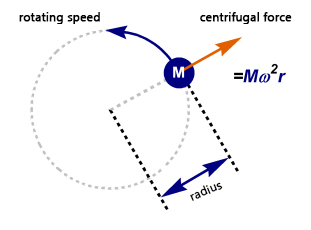People are often confused with RPM, RCF and g force(xg) about its relation & difference and which parameter is most important in centrifugal applications. As a result, they failed to choose the correct centrifuge according to their own experimental procedures and requirements. Below we will explain these three terms and its relations.
Since its invention, the application of centrifugal technology has been very mature. It is mainly used for the separation and preparation of various biological samples including blood products. Under high-speed rotation, due to the strong centrifugal force, the tiny particles suspended in the biological sample suspension (organelles, the precipitation of biological macromolecules, etc.) accelerate the sedimentation speed, so as to be separated from the solution.
1. What is the Difference of RPM, RCF and G force (xg)?

During the centrifuge process, RPM(revolutions perminute) represents the rate at which the motor in the centrifuge drives the rotor to rotate at a high speed, that is, the number of revolutions of the rotor per minute. The larger the RPM value, the more the number of revolutions per minute, that is, the faster the speed. So it is the way to describe how fast a centrifuge is rotating.
Usually centrifugal force is often expressed as a multiple of the earth’s gravity, so it is called relative centrifugal force “RCF”. RCF(relative centrifugal force) represents the force applied to separate cells (particles) of different densities in the test solution during centrifugation.
The measurement unit of RCF is g, so RCF can also be called g force. I.e. 25000 xg means the relative centrifugal force is 25000.
When the centrifuge manufacturer sells the product, it will list the core parameters RPM & RCF (xg) corresponding to the centrifuge model for buyers to choose. I.e. the following KETHINK PCR centrifuge listed these 2 key parameters in the specification chart.

Please note that: the maximum speed(RPM) in the above chart refers to the speed under no-load conditions. But the maximum speed varies according to the type of rotor and the size of the sample mass.For example: the rated speed of a centrifuge is 16000 rpm, which means that the rotor rotates 16000 times per minute when there is no load. After adding the sample, the speed will definitely be less than 16000 rpm. Customers need to take this factor into consideration when purchasing.
2. How to Convert RCF to RPM?
RCF is a result of the rotor revolving so is dependent on RPM. To calculate RCF from RPM, you can use the following equation:
RCF = 1.12 x Radius x (rpm/1000)2 (r = average radius of the rotation)
3. RPM VS RCF(xg), Which is More Important?
It can be seen from the above formula that as long as the radius of rotation and RPM are given, the RCF value can be calculated.
During the centrifugation process, the RCF value will directly affect the separation efficiency and quality of the sample. RPM is only used to calculate the required RCF. On this basis, if you want to choose an accurate centrifuge that meets the requirements, it is recommended that you determine it according to RCF,that is g force.
4. How to Calculate the Average Radius of Rotation?
From the above equations,we can see RCF/g force is also determined by the rotation radius. So we have to measure the radius before we calculate the RCF or RPM.
Due to the difference in the shape and structure of the rotor, the centrifugal tube of each centrifuge has different distances from the top to the bottom of the tube and the axis of rotation. Therefore, the average radius of rotation is specified in the calculation, it can be calculate by the following equations:
ra v=( r min+r max) / 2
5. How to Calculate RPM Given Rotor Radius and RCF?
Rearranging theequation above will enable you to calculate the RPM required for a given RCF. To calculate RPM from RCF, use the following equation:

(r = average radius of rotation)
If you are reluctant to do the calculations by yourself, please click for an online converters to help.
